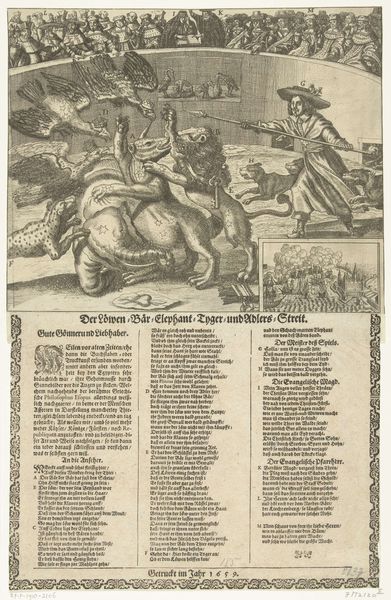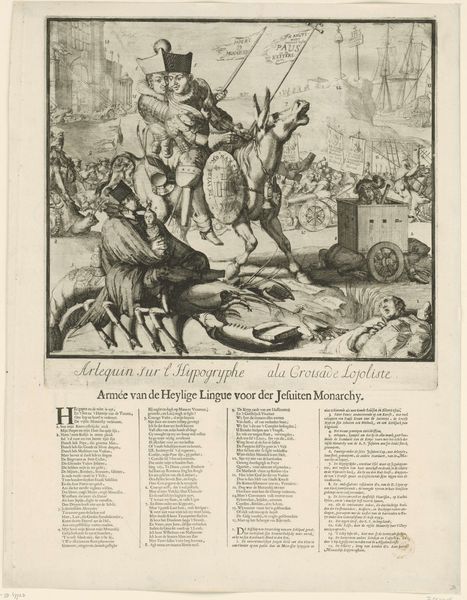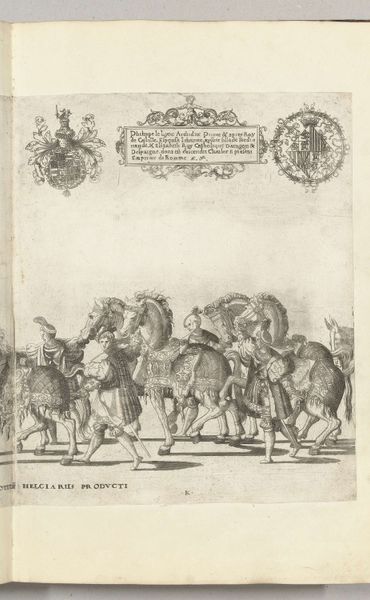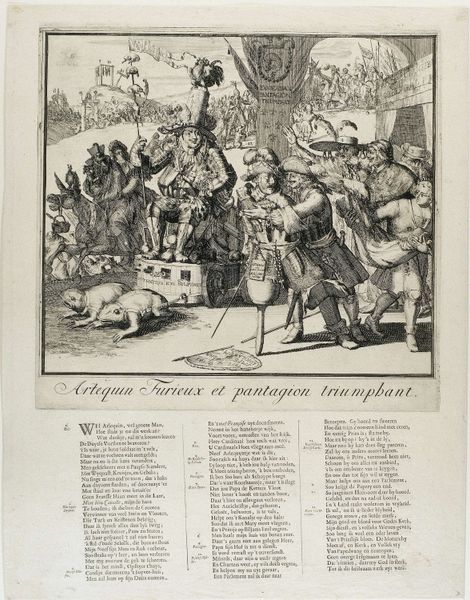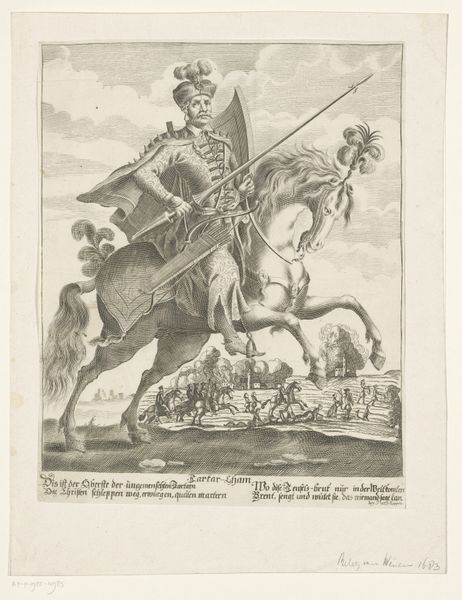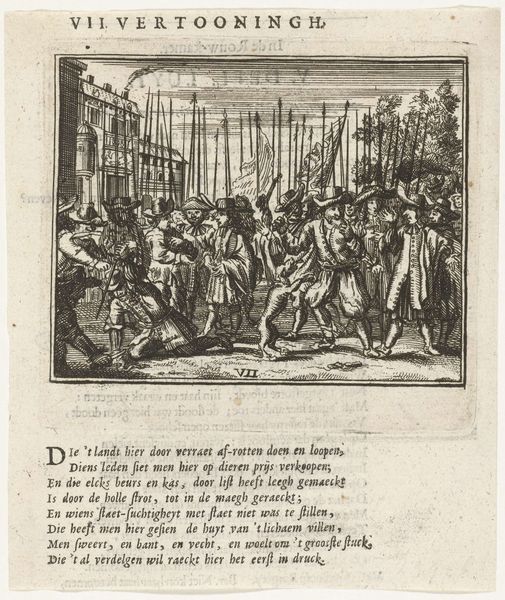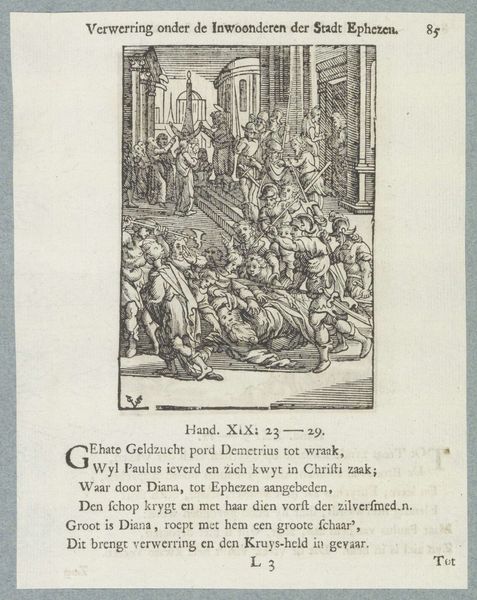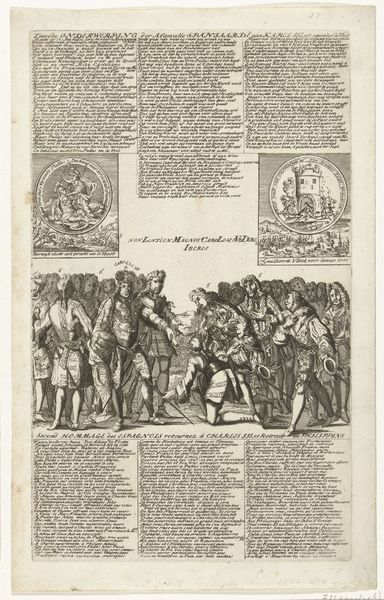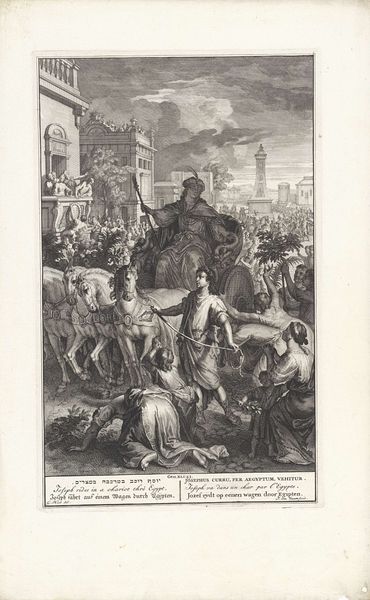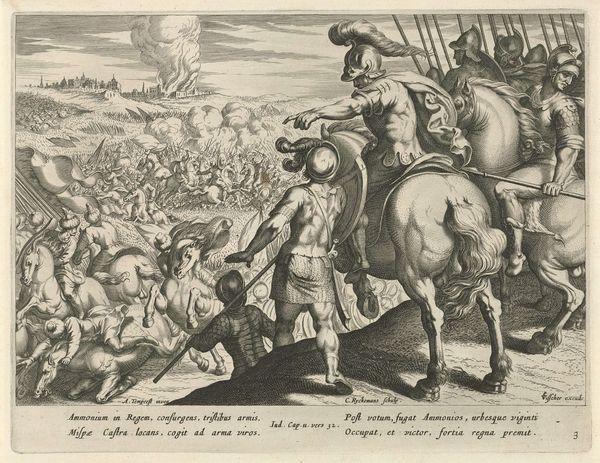
print, engraving
#
portrait
#
narrative-art
#
baroque
# print
#
old engraving style
#
history-painting
#
engraving
Dimensions: height 375 mm, width 297 mm
Copyright: Rijks Museum: Open Domain
This print, made in 1688 by an anonymous artist, shows James II on horseback, presenting charters to William of Orange. Note the posture of James. He is offering the charters, but with a distinct lack of grace, his body language suggesting reluctance. Consider the motif of offering or supplication. This gesture is not new; it echoes through centuries, appearing in ancient Near Eastern art where defeated rulers offer tribute, or in Renaissance paintings where figures kneel before a deity, hands outstretched in appeal. The symbolic language here speaks of power dynamics and submission. Yet, the meaning has shifted. No longer a sign of reverence, here it signifies political defeat. The collective memory of such gestures – the inherent human desire to establish dominance – is subverted. The viewer is subconsciously invited to acknowledge the performance of power as a spectacle, a staged drama where the true emotions are masked by forced compliance. We are witnessing a psychological game played out on the stage of history, where the subconscious desires of power and control are brought to the surface. It is a symbol that has resurfaced, evolved, and taken on new meanings in a different historical context.
Comments
No comments
Be the first to comment and join the conversation on the ultimate creative platform.

